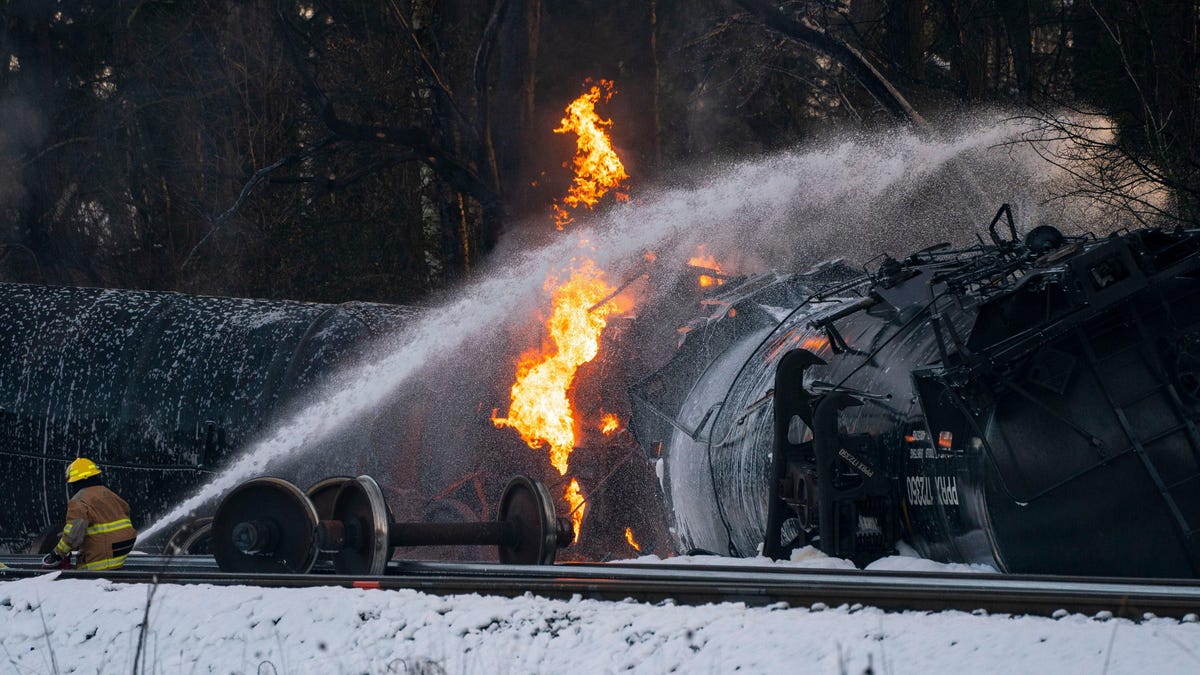
Freight railroads are using something called Precession Scheduling to run longer trains with fewer crewmembers in order to maximize profits. To hopefully curb potential accidents, the Biden Administration mandated Tuesday a bare minimum that at least two people be aboard sometimes miles-long freight trains. Some trains, however, will get a pass even on this bare bones basic safety requirement.
Dangerous derailments, especially the toxic chemical spill in East Palestine, Ohio, prompted public scrutiny, but progress on new legislation has moved at a glacial pace. This new rule is the first proposed since 2022. In a statement from the Federal Railroad Administration, Transportation Secretary Pete Buttigieg said:
“Common sense tells us that large freight trains, some of which can be over three miles long, should have at least two crew members on board – and now there’s a federal regulation in place to ensure trains are safely staffed. This rule requiring safe train crew sizes is long overdue, and we are proud to deliver this change that will make workers, passengers, and communities safer.”
Now, I wouldn’t consider a train over a mile long with two crewmembers “safely staffed.” Continuing on from Buttigieg’s example, a crewmember is expected to walk six miles if a three-mile-long train is forced to stop due to an issue at the other end. During this lengthy hike, the train is stopped wherever it is for at least an hour. Yes, requiring a second crewmember is a marked improvement, but it barely reaches the bare minimum for safety. The railroad companies claim there’s no evidence that larger crews will make operations safer, but the smaller, less safe crews were one of the many complaints railroad workers brought to the table in 2021 when a nationwide freight strike loomed.
The new FRA rule doesn’t outright ban one-person crews. Existing single-handed operations, including hauling hazardous materials, can continue if they “do not pose significant safety risks to railroad employees, the public, or the environment.” The new rule also establishes an approval process for new one-person crew operations.







